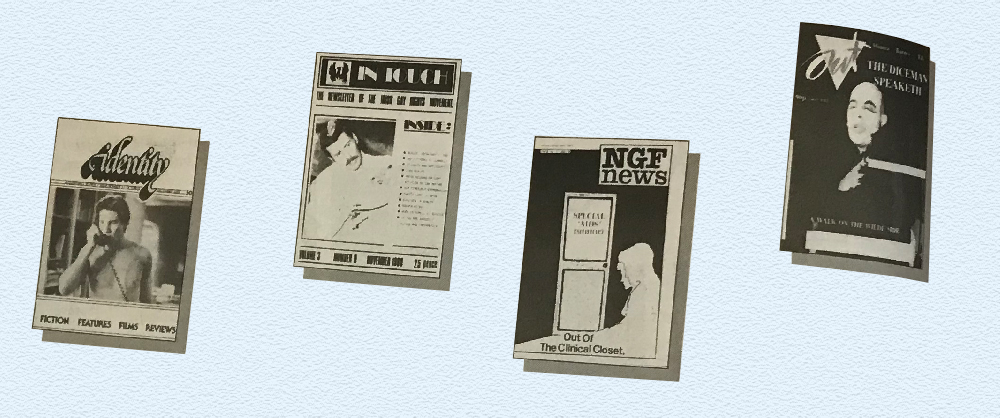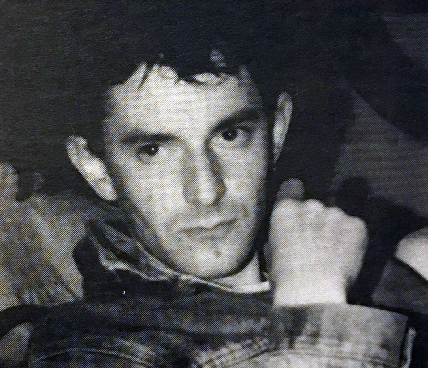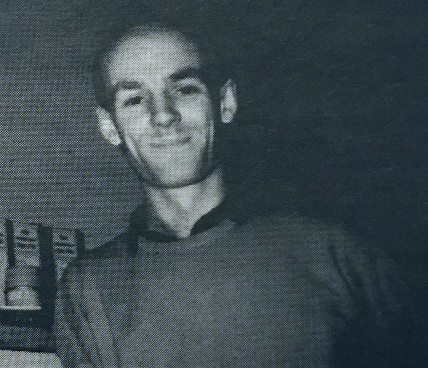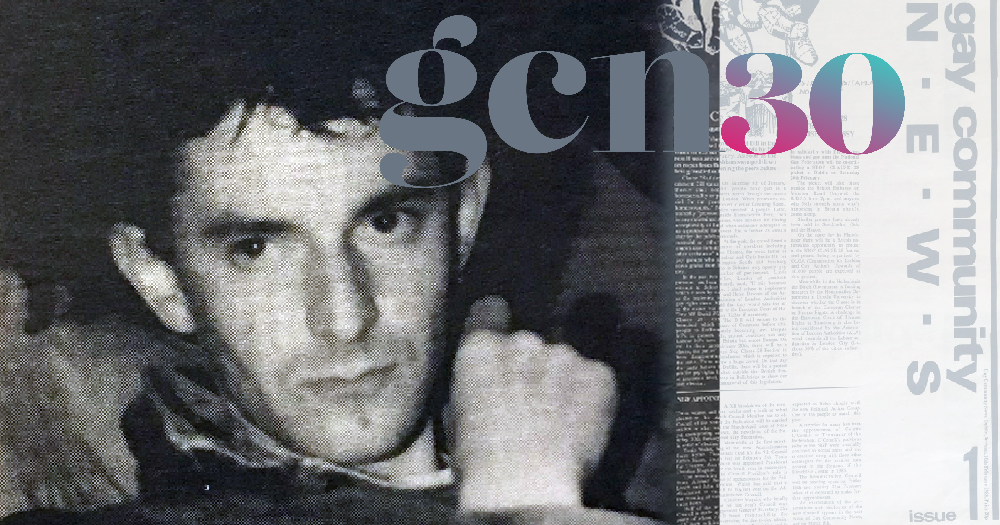This article, titled That Fucking Rag, was first published in issue 100 of GCN in 1997.
It was the year the National Lottery launched the Lotto with a big fireworks display in Dublin’s Phoenix Park and the city’s superb Television Club in Harcourt Street, once the haunt of sixties’ swingers and seventies’ punks, was demolished to make way for an anaemic redbrick office block. On February 10 that same year an eight-page tabloid called Gay Community News hit the streets.
Having worked on the magazine as a staff reporter, I was determined to avoid the pitfalls OUT had encountered if and when GCN was set up. And it was a big if.
A year earlier, National Gay Federation (NGF) general secretary, Catherine Glendon and I (federation president at the time) had talked at length about the need for a radical newspaper-style project that would straddle the roles of OUT and NGF NEWS. Although it was Ireland’s first commercial queer magazine, we wanted something that was more immediate than a bi-monthly like OUT, much more inclusive, and less of the in-house newsletter that was NGF NEWS. We wanted it to be irreverent and earnest at the same time and it had to look like a newspaper.

So early Summer 1987 we approached our colleagues on the NGF administrative council and sat down to consider a proposal for a new A3 monthly publication. There had been considerable dissatisfaction within the federation about the lack of a publishing voice. OUT, originally established by Edmund Lynch, Maurice Devlin, Carol Lanigan, Tom McClean and David Twohig and bankrolled by NGF, had at one point assumed responsibility for publishing NGF NEWS. But OUT had run into problems In common with previous Irish queer publishing ventures it operated on a shoestring and in its last eighteen months was beset by money shortages and professional wrangling.
some areas of Irish society actively encouraged homophobia Dublin’s main queer social and cultural resource, the Hirschfeld Centre, was destroyed in suspicious circumstances
Having worked on the magazine as a staff reporter, I was determined to avoid the pitfalls OUT had encountered if and when GCN was set up. And it was a big if. It took considerable persuasion with some of my colleagues on the administrative council. Favourable in principle to the GCN proposal, all were up to their necks at the time in voluntarily running the Hirschfeld Centre and money was tight NGF was trying, sometimes without success, to redefine itself and its role in the civil liberties arena. My original suggestion of calling the new publication Fag Rag was shot down for being too frivolous. In agreeing on the title, we were all keen to validate some sense of community.

Ten years on, the centre spread of GCN’s first issue serves as a reminder of that time. The bulwark of anti-discrimination legislation had not yet been put in place. Gay men’s sex was criminalised and some areas of Irish society actively encouraged homophobia Dublin’s main queer social and cultural resource, the Hirschfeld Centre, was destroyed in suspicious circumstances and we lost an increasing number of friends, lovers and colleagues to emigration and AIDS. Catherine Glendon died tragically on 5 August 1987 from a stroke, cutting short a life and career coming into her prime. The launch date of the paper was put back by several months.
Like every publication tool before us, we were full of good intentions and an unbelievable amount of optimism – and naiveté. The Hirschfield Centre’s library had contained over 100 titles from every part of the globe representing an important reference tool, although most remained in storage after the fire. And our temporary headquarters at David Norris’ Seanad campaign office on North Great George’s Street was primitive, albeit decorated in Georgian splendour.
That first issue flagged a story about three gay women abseiling into the House of Lords, a feature about cross-dressing and an excellent item on the criminal law entitled Bugger Off
Niall Sweeney, a fledgeling graphic designer on the run to glory from Dún Laoghaire College of Art & Design had spent the summer of ’87 in Boston working on that city’s own Gay Community News -much admired by us in NGF. Before returning to Dublin he had revamped its cover and layout. I thought there was no-one more suitably qualified to design our sister project.
With the first issue imminent, the editorial team of Bill Collins, Frank Fitzgerald and I resolved to maintain NGF NEWS as an occasional house freesheet and operate the new paper on the basis of collective responsibility. There were too few of us anyway to impose an editorial hierarchy and my experience elsewhere showed that anything short of collective accountability would not be in the long-term interests of the new publication. Niall was given full creative independence and trust in his design brief. It was a vet 1 unsophisticated set–up. We produced the first issue on NGFs sole typewriter and sent it out for typesetting -both laborious and expensive. Niall was given a week to put the paper together and Judith Storm, facilitator of the Transvestite line, and I drove to our printers, the Meath Chronicle in Navan with the boards. Anne-Marie McCarthy & Conor Owens of the Dublin Event Guide also used the Chronicle and opened a few helpful doors for us.
At that point, NGF’s overdraft was hitting £6,000 and our only income came from a few fund-raisers in the recently opened Irish Film Institute (later IFC) and Sides Dance Club. With an operational budget of £300, we felt compelled to charge 20p for Issue 1. That first issue flagged a story about three gay women abseiling into the House of Lords, a feature about cross-dressing and an excellent item on the criminal law entitled Bugger Off, written by barrister and NGF council member Jim Treanor.
On July 12 I wrote in my diary: “Finished editing copy for Issue 5/6 of GCN. Now the problem of finding a way to pay for its printing“.
Now a respected news reporter at RTÉ, Walt Kilroy was the only professional journalist involved in GCN at that time. He was a valuable critical voice in shaping the paper during its first year. For Issue 2 we doubled the cover price and added four extra pages. Claudine Maguire, then NGF general secretary and dyke with attitude, hustled her women friends to contribute, as did Don Donnelly then Director of Tel-A-Friend/Gay Switchboard, who took responsibility for our authentic yet irreverent Dear Dorothy agony column. Check those early issues for classic Niall Sweeney illustrations and the beginning of a fetish flirtation that would see its apotheosis in recent Dublin Clubs like GAG and POWDERBUBBLE.

By May, Frank Fitzgerald had left. Bill Collins and I were too exhausted to look for advertising. Our personal lives were all over the place. I was having major problems with my partner who – no unjustly – felt I was spending more time with “that fucking rag” than him. Bill left shortly afterwards to make a life in London, leaving Tony Murphy and I to carry the editorial and production responsibilities.
On July 12 I wrote in my diary: “Ts now in London on a week’s vacation. Our relationship took its own vacation, reluctantly yet mutually agreed, about a fortnight ago. It’s a very difficult time; adjusting to a new situation and finding oneself thrown back on fear of the unknown, fear of living alone, living lonely. Finished editing copy for Issue 5/6 of GCN. Now the problem of finding a way to pay for its printing“.
Meanwhile, Niall brought his partner Frank Stanley on board to help with the design and Seán Gilmartin, who’d come to my attention with his captivating photos of the 1st Alternative Miss Ireland at Sides, was contributing gorgeous visuals.
Issue 8/9, condensed for financial reasons, added another 4 pages with a small increase in advertising. A new and highly literate Arts Editor came on board in the form of Maynooth student Peter Hussey.
The paper disappeared for four months and we moved from the temporary office back into a charred and rank Hirschfeld Centre.
Looking back, Catherine and I originally conceived GCN as an information resource that would reflect the growing confidence and diversity of the Irish queer communities.
Early ’89 was spent cleaning the building of debris and making good the office on the top floor with a temporary power circuit and paint job. The NGF administrative council organised several volunteer weekends to help clear rubble.
Issue 10 returned in March ’89, symbolically marking the tenth anniversary of its Temple Bar home and flagging a lead story about UCD’s refusal to recognise the college gaysoc.
Saturday 18 March: “The city is thronged with tourists and us natives have responded by partying everywhere. Days are balmy and sunny while nights slap us on the face with temps. below zero and biting cold winds. I’ve spent past weeks dividing my time between GCN – Issue 10 finally came out last week to good reaction – and getting smashed. Last w’end was just one long acid trip, heralding late nights at Sides and Minsky’s and druggy mornings at Nth. Gt. Charles’ Street.”
The National Lottery had meantime turned down an application from the Hirschfeld Centre for £117,000 to help rebuild the community resource. With the demise some months earlier of OUT and lacking the public amenity of the Hirschfeld Centre, we resolved to ensure the paper was published and distributed to as wide an audience as possible. NG F’s files were full with correspondence from outside Dublin; isolated and often lonely people around the country who relied on the paper for some measure of contact and humanity.
Gay Community News is entitled to collectively celebrate a unique chapter in Irish community publishing, one written by a vast number of dedicated and talented people, some of whom never lived to see the success it has become.
There was much talk about using GCN to document the lesbian and gay experience in Ireland, to record our stories and to provide as comprehensive outreach as possible -the latter partly achieved in later-years by some finely written and designed Munster/Connaught GCN inserts.
Moves were made to bring personnel on board through a FAS training scheme. After the brief optimism of Issue 10, the paper remained unpublished for a further six months as the FAS scheme was put in place. The scheme effected a welcome and thorough re-organisation of the publication. It was time to move on.

When I moved to London in October ’89 John Bergin assumed the role of Managing Editor with the collaboration of a more balanced and talented editorial team, Annabel Konig as designer and a raft of strong contributors. Valentine Tynan was appointed to advertising and when Issue 14 appeared in December ’89 it seemed the future of Ireland’s newest independent queer periodical was secured.
Looking back, Catherine and I originally conceived GCN as an information resource that would reflect the growing confidence and diversity of the Irish queer communities. Although the human and economic resources weren’t always to hand, it never dulled our huge desire to document and celebrate our lives, our histories – made all the more urgent by the devastation of AIDS and the almost complete absence of recognition in the mainstream of our society.
Previous queer publications, no matter how short-lived, had given expression to that desire, often in such austere and challenging times it’s hard to credit today.
We’ve yet to document those stories I mentioned earlier. And our lost brothers and sisters deserve to be heard and remembered.
On the occasion of its 100th Issue and as it approaches its tenth anniversary next February, Gay Community News is entitled to collectively celebrate a unique chapter in Irish community publishing, one written by a vast number of dedicated and talented people, some of whom never lived to see the success it has become.
But there’s no time to rest on our laurels. GCN needs to thoroughly re-examine its role as the leading Irish queer periodical in a society that continues to throw off its near feudalistic past, a society desperately and energetically determined to be more cosmopolitan and European than the EU itself. Everything is up for grabs, from the seemingly banal like design and colour repro, to more complex editorial policies.
Whither its independence? And what of the role of State funding versus commercial advertising? How to balance the latter with editorial freedom? And does the paper require a code of conduct? How willing is GCN to engage in the long-term development of a publishing house? Last year’s publication of Insight, possibly the most comprehensive queer response to AIDS in Ireland, was a significant step in the right direction, and perhaps the first in a long line of collaborative projects to run in tandem with the paper. We need to harness people’s expertise, energy and vision for this.
We’ve yet to document those stories I mentioned earlier. Some have been told in other arenas but most have yet to be collected or published. And our lost brothers and sisters deserve to be heard and remembered.
There is no room for complacency when greatness beckons. This paper, the longest continuous queer periodical in Ireland, is uniquely placed to be the defining voice of
our generation and in time an invaluable historical document.
Our future is very definitely now. Here’s to new beginnings…
for Catherine Mary Glendon
© 2018 GCN (Gay Community News). All rights reserved.
Support GCN
GCN is a free, vital resource for Ireland’s LGBTQ+ community since 1988.
GCN is a trading name of National LGBT Federation CLG, a registered charity - Charity Number: 20034580.
GCN relies on the generous support of the community and allies to sustain the crucial work that we do. Producing GCN is costly, and, in an industry which has been hugely impacted by rising costs, we need your support to help sustain and grow this vital resource.
Supporting GCN for as little as €1.99 per month will help us continue our work as Ireland’s free, independent LGBTQ+ media.
